|
Part 3 – The Scarlet Empress & The Devil is a Woman
| The Scarlet Empress (1934) |
|
If you've been seduced by the pre-Code risk-taking of the previous films in this set, the emblemed title card that heads up Josef von Sternberg's fifth Hollywood collaboration with Marlene Dietrich, one that confirms that the film has been approved by the Production Code Administration, is likely to get the censorial alarm bells ringing. Worry not. Yes, the Production Code came into full force in 1934, the very year The Scarlet Empress was released, but it was only the sixteenth film to be certified and those enforcing the Code had yet to really start putting their sanctimonious feet down. If you're in any doubt, watch the montage of horrible tortures used to illustrate a tale being told to young German Princess Sophia Frederica (played by Maria Riva, Marlene Dietrich's real-life daughter), one of which involves topless women being burnt at the stake. I'm guessing children's stories were different back then.
Sophia's ever-irritable mother, Princess Johanna Elizabeth (Olive Tell) is determined that when Sophia grows up she will marry a king, but young Sophia seems more interested in becoming a toe dancer or a hangman. Honestly, this makes more sense as it plays out in the film than it reads, though I still don't know what a toe dancer is. When Sophia has bloomed into a beautiful young woman (Marlene Dietrich, of course), however, the news that she is to be transported to Russia to be married to Peter Fyodorovich (Sam Jaffe), the nephew of Empress Elizabeth Petrovna and heir to the Russian throne, she's all wide-eyed and atwitter at the prospect. When a Russian emissary arrives in the shape of Count Alexei (John Lodge), Sophia is captivated by his good looks and wonders just how handsome her future husband must be by comparison. It turns out Alexei already has this speech rehearsed. "He's the handsomest man in the Russian court," he informs her with vigour, "tall and formed like a Greek god, a model in fashion and deportment which all of us strive to follow." Hell, even I started to find myself attracted to this image of human perfection. The journey to Russia takes weeks, and almost as soon as Sophia and her mother reach the Kremlin, the Empress Elizabeth announces that Sophia will convert to Russian Orthodoxy and from this point forward be known as Catherine Alekseyevna, "a good Russian name." The still innocent Sophia effectively nods her way through the whole thing and clearly can't wait to meet her future husband, despite having been the target of some seductive naughtiness on Alexei's part during the course of their journey. She's thus a bit crestfallen when Peter turns out to be a mad-eyed, incessantly grinning dimwit with the intelligence and attention span of a small child.
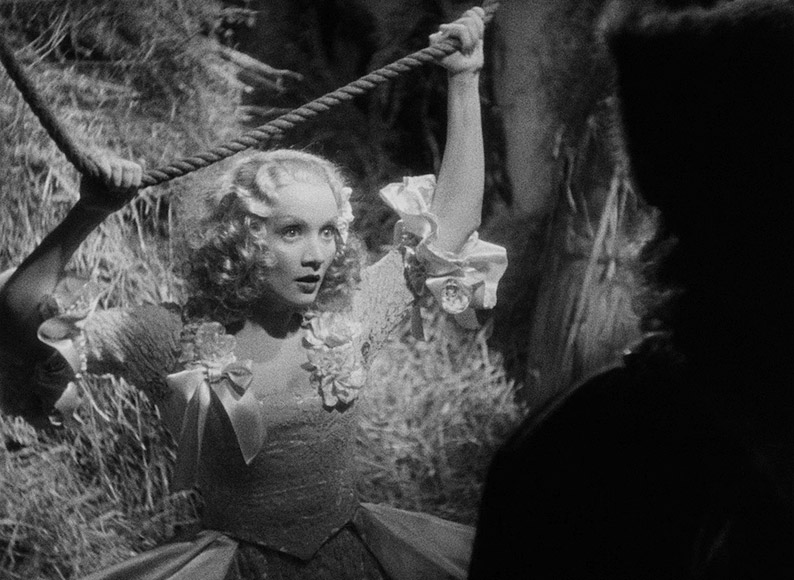
If you're not familiar with Russian history it's worth knowing that the film is based on actual events and specifically on the diaries of Catherine II, otherwise known as Catherine the Great. This should give those in the know a good idea of how the story will play out and how it will probably end, though they're likely to raise an eyebrow or two at the considerable liberties taken with historical fact. Opinion does differ on whether Peter was as unpleasant as Catherine claimed, but I've read nothing yet to suggest he was the manic simpleton he is portrayed as here. He is also shown, in the course of a busy montage following his later ascension to the throne, to have passed a series of spiteful proclamations that almost cast him as a supervillain, whereas in truth he passed bills that proclaimed religious freedom and abolished the country's secret police, as well as making it illegal for landowners to murder their serfs. I hear Jacob Rees-Mogg is looking to overturn that one. We'll turn a blind eye to the fact that the real-world Sophia was only 10 years old when she was shipped off to Russia to be Peter's bride, as I can't somehow imagine that even a not-up-to-speed Hays office would have let that one through. It's also worth remembering that this is Hollywood in the 1930s, a time when a collision between legend and fact usually saw filmmakers opt to either print the legend or invent one of their own. Hell, they're still doing it today when they think tinkering with fact will boost box-office takings. Here the presentation of Peter as a halfwit with a skeletal smile is used to establish from the off that this marriage is not going to be the fairy-tale union of Sophia's dreams, emphasised when she is berated by the testy Empress Elizabeth for quietly eyeing up the ever-present Count Alexei and ordered to work as a servant to learn how to be a good wife.
So what is it about this film, released just a year after the success of Alexander Korda's The Private Life of Henry VIII had whetted the public appetite anew for historical dramas, that makes it stand out from the genre crowd and mark it as a Josef von Sternberg film? Well, let's start with the central character. In his commentary on the Blonde Venus disc, Adrian Martin makes a solid case for the notion that the characters played by Dietrich all undergo major transformations during the course of her films for von Sternberg, and nowhere is this more clearly evident than here. As Sophia, she has the wide-eyed innocence and curiosity of a child making her first visit to an aquarium, but as Catherine she transformed by her experiences into a sex goddess who is able to enlist the loyalty of the army by bewitching and seducing influential officers. It's a metamorphosis first glimpsed in an extraordinary sequence in which she secretly meets Alexei in a barn and breathlessly sways before him whilst hanging onto a rope for support – her expression still has the innocence and curiosity of Sophia but is also laced with Catherine's later desire and seductive sexuality, which is underscored by the fact that she repeatedly lets her gaze wander from Alexei's eyes down to his groin and back again. This is taken a step further when she flops down and playfully deflects Alexei's desire to kiss her by placing a stalk of hay in her mouth and replacing it every time it's pulled away. Even more so than in any of the previous films, Dietrich really shows here just how much she can communicate with a single look or with her body language, and is so suggestive at times that I have little doubt that the film would not have been passed without serious cuts a few months later when the Production Code was being more strictly enforced.
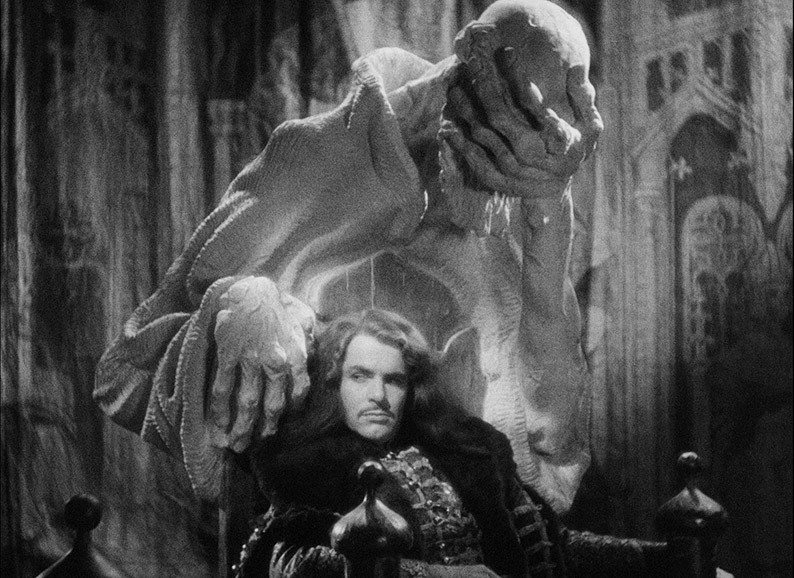
The set design (by an uncredited Hans Dreier) is consistently remarkable, and while this has been a strong point of all of the previous films in this set, here von Sternberg seems to have thrown all caution to the wind. Realism is sidelined in favour of some of the most expressionistic sets this side of Caligari, with the Kremlin interior dominated by extraordinary oversized statues of gargoyles and suffering saints (by Peter Ballbusch, also uncredited), which pose ominously in rooms and surround chairs like demonic servants awaiting their master's instructions. Doors, meanwhile, are panelled with ornately complex carvings and are often as tall as those child-perspective ones in William Cameron Menzies' Invaders from Mars. This expressionistic aspect of the design extends to seemingly every costume that Dietrich dons and range from opulent feathered dresses to the white Cossack uniform with which she later leads her troops.
Then there's the comedy. Sorry, what? If you've just watched Dishonored you may be wondering if this could really count as a von Sternberg trait, but the sheer confidence and wit with which the lighter moments are executed here is a delight and very much the work of a man in full command of his craft. These range from Sophia's rapid round of hand-kissing to greet family members (complete with what is known as some Mickey Mousing on the partially von Sternberg-composed score*) to the sometimes snappy and pause-free timing of the line delivery and the above-mentioned hay-in-the-mouth sequence, which had me sniggering helplessly. Having said that, the moment that amused me the most comes right at the start and involves a character who is not even on screen for long enough to land a credit (he's apparently played by Harry Woods). There's no way to communicate in writing just why this single innocuous line of dialogue tickled my funny bone except to note that it really is all in the comical oddness of the delivery, but it involves a distracted doctor saying to the unwell young Sophia, "Stick out your tongue Your Highness and say 'aaah'." Honestly, I just re-watched that bit to check the accuracy of the quote and it still made me laugh.
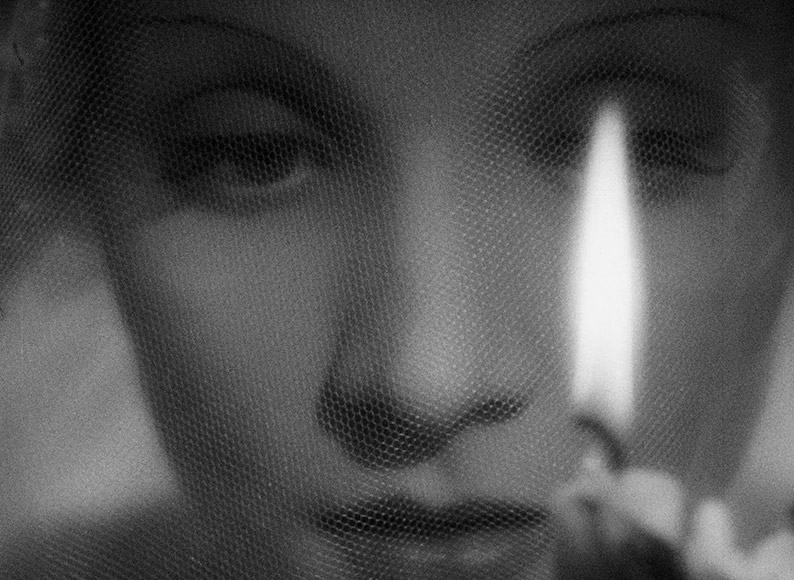
And of course there's the scale. Where in his previous films, notably the party sequence in Dishonored, von Sternberg found inventive ways to suggest there was more happening on screen than there actually was, here he is able to stage scenes with an almost epic sense of grandeur. The opening credits even make a point of announcing "a supporting cast of 1000 players" and there are times when it seems evident that this was no idle boast, despite the fact that some of the bigger exterior crowd shots were actually cribbed from Ernest Lubitsch's 1928 The Patriot. The consistently brisk pace, meanwhile, showcases von Sternberg at his most cinematically energetic, even if it does mean that it's sometimes hard to tell exactly where characters are or where they're going during the climactic uprising. His stamp is also firmly evident in his signature use of long dissolves, expressionistic pools of light and shadow and emotive (and at one point artistically striking) facial close-ups, and there's hardly a shot that isn't bristling with art-directed or costumed detail. Where the film does deviate from the director's previous works is in a frequent use of silent movie-style title cards to advance the story, but this does allow him to cover considerably more ground without having to stage scenes that I have no doubt he would have regarded as unnecessary padding in a film that's less about the history than the woman who made it. And it really is something. Read a two-sentence synopsis and you'd likely peg The Scarlet Empress as a historical costume drama, and in some ways it is – the costumes are certainly striking and the drama is compelling. Yet such casual labelling fails to do justice to a work that plays like no other you could comfortably shoehorn into such a loosely-defined category, and once again demonstrates just what could be achieved when a director of von Sternberg's vision and a star of Dietrich's magnetism were firing together on all cylinders.
| The Devil is a Woman (1935) |
|
The final collaboration between Josef von Sternberg and Marlene Dietrich opens during carnival week at the start of the last century in a characteristically fantasy vision of a town in southern Spain, where local Governor Don Paquito (Edward Everett Horton) is addressing the district's policemen. The carnival is bound to attract all manner of miscreants, he warns them, but he doesn't want any useless arrests. "If you catch a man stealing, shoot him," he barks. "Less trouble afterwards." Yeah, that sounds reasonable.
We're then treated to what may be the most densely packed example yet of von Sternberg's penchant for filling each shot with interesting detail, as the camera tilts down from a lively balcony to the street below and every square centimetre of the frame is busy with people and costumes and a hailstorm of streamers. Even on a TV screen this prompted me to gasp – in a cinema in 1935 it must have been overpowering. Making his way through the bustling crowd is the smiling masked figure of Antonio Galvan (Cesar Romero, later to become famous as the first screen incarnation of The Joker). After chatting with a fellow whose mechanical double can be found in J.F. Sebastian's apartment in Blade Runner, he catches the eye of an attractive woman named Concha Perez (Marlene Dietrich), whom he then follows back to a gated residence to which he is refused entry by an uncooperative butler. His hopes are raised again when he is passed a note from Concha revealing that it is her custom to go driving each evening on the Avenue of the Sycamores. Do with that what you will, sir. Eager with anticipation, he by chance bumps into Pasqual Costelar (Lionel Atwill), an old and dear friend who was formerly Captain of the town's Civil Guard. It's here that we learn that Antonio's pro-Republican activities have made him a wanted man, that he now lives in self-imposed exile in Paris and that he is secretly in town to visit his parents. When he mentions to Pasqual that he is planning to meet a captivating woman named Concha, however, his friend's mood changes and he tells his friend a cautionary tale about this woman, whom he fell in love with and who toyed heartlessly with his emotions. He was left so humiliated and dejected by the experience that he felt compelled to resign his commission. Antonio is startled but keeps his rendezvous with Concha in order to berate her for destroying the life of his closest friend, but soon finds himself drawn irresistibly to her and pulled into a relationship that looks set to tear his long-standing friendship with Pasqual apart.
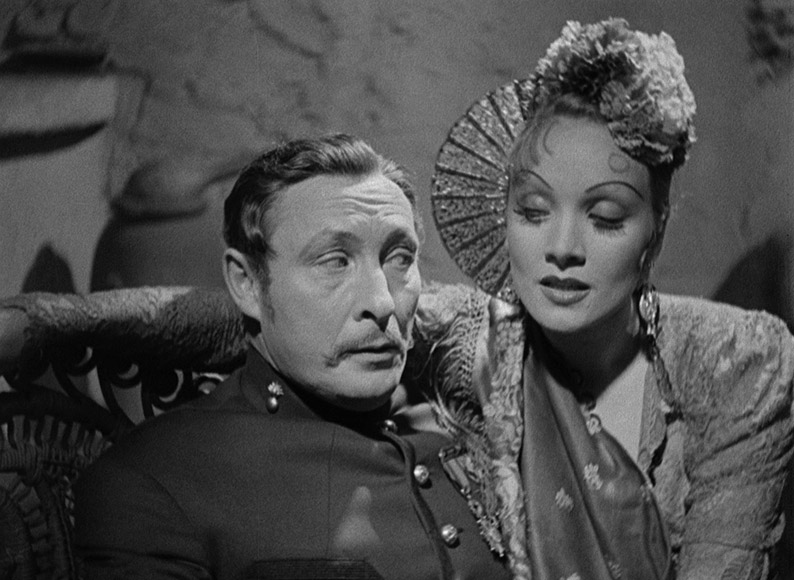
There is, I suspect, a case to be made for labelling The Devil is a Woman as a misogynist work, one whose dim view of womankind is spelt out in the title and nailed home in the narrative and character development, and I'm not about to let the huge respect I have for von Sternberg prevent me from dismissing this viewpoint out of hand. Indeed, I can't help but think that if the film were made in Hollywood today with the same central character and story, it would find itself the target of a good many #MeToo-inspired brickbats and would likely be deserving of each and every one. If that sounds a little extreme, try to imagine a modern mainstream American film in which a woman amuses herself by financially exploiting a police official who has fallen for her, repeatedly giving him the run-around and taking off with younger lovers, which the officer eventually reacts to by barging into her house and beating her silly. The following morning the woman responds by cheerfully calling on the man to make sure he's alright after the previous evening's exertions. Jeez, I feel queasy just typing that out. Having said that, however, there's an equally strong argument for seeing Concha as a gleeful disruptor of male expectations and the idealisation of women, an early film manifestation of that obscure object of desire that so frustrated Fernando Rey's every attempt at seduction in Luis Buñuel's sublime final film. Seen from this viewpoint, Concha is a pragmatic survivor who is defined more by her independence and her wily resilience than any male-centric notions of gold-digging wickedness. And if you take on board John Baxter's remarks on the previous disc about how von Sternberg's films with Dietrich are reflective of their personal relationship, you've probably got a sizeable essay of material in what all this tells us about the man who essentially authored the film. If you're looking for evidence to back up this theory, consider the words of von Sternberg's son Nicholas on this very disc when he notes that Lionel Atwill (who plays Costelar) is made up to look just uncannily like his father...
While it's fair to say that a female character as strong-willed and cheerily opportunistic as Concha might play uneasily in a modern work, it's worth noting that she would also have been something of a rarity in 30s and even 40s American cinema, at least outside of the femme fatales of noir crime thrillers. Fascinating as a character, she also kicks against those proto-Christian notions of morality that the Hays Code was set up to enforce. What's particularly distinctive about Concha (and once again I'd hop to the next paragraph to avoid spoilers) on this score, however, is that unlike the characters played by Dietrich in the other von Sternberg films in this set, she doesn't undergo a major transformation or seriously modify her ways over the course of the film's narrative. The fact that she will bewitch and even sleep with any man she encounters if she believes it might benefit her financially or give her useful leverage before discarding them would normally cast her as irredeemably bad in Hays Code-era Hollywood cinema. At best she would be painted as a misguided soul who by the film's end would be persuaded by the love of a good man to put her troubled past behind her and become a paragon of virtue. Even when Concha appears to be falling prey to this particular moralistic convention, there's something about her previous behaviour and Dietrich's performance (more on that in a minute) that still had me convinced it was all a show, and that she was at some point going to pull the rug from under the lovesick Antonio's feet. Repeatedly I was reminded of Dedee Truitt in The Opposite of Sex when she sardonically states that "I don't have a heart of gold and I don't grow one later, OK?"
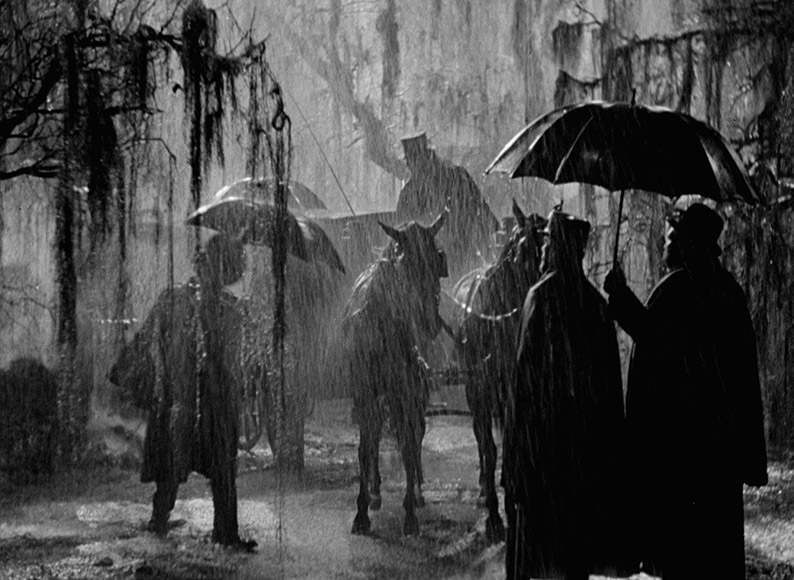
Having put his authoritative stamp on every aspect of the look of his previous films with Dietrich, here von Sternberg dispensed altogether with a third party cinematographer and shot and lit the film himself. This seems to have freed him up to take an almost unrestrained approach to his technique of filling negative frame space with sometimes dizzying levels of detail. This is on show throughout the film, from the dangling photos that decorate the ceiling-mounted netting in the room of Concha's one-eyed manager, to the fateful arrival of a carriage in woodland that is barely visible through the heavy rainfall and dense foliage dangling from the branches of foreground trees. As ever, Dietrich's costumes are as eye-catching as they are unlikely, and in a break from her performances in the previous films in this set, here Dietrich lets rip in a manner that I can see some classifying as overacting, but I'd argue vociferously that that this is absolutely right for the role. Dietrich here is not overacting but is playing someone who overdramatises her responses to everyone and anything, the sort of person who would show her indignation at a boyfriend's behaviour not by quietly glaring but by slapping her hands colourfully onto her hips, tossing her head back, widening her eyes and shouting, "Well, if you're going to be like that, I'll go on my own!"
It's hard for me to pin down just why The Devil is a Woman is such a fascinating work when I'm still unsure which side of the feminist fence it was designed to sit on, and indeed whether my discomfort at the surface presentation of Concha as a calculated opportunist is telling me something about myself I might not want to know. Artistically, it's bristling with so much detail that subsequent viewings prove as rewarding as the first, and despite the Hays Office-imposed removal of some sequences, there's a boldness and daring to how the story plays out that still ensures there's no other film from the period (or indeed beyond) that plays or feels quite like it. There's even a dash of surrealism in the shots of costumed and masked figures – which have echoes of the grotesque statues from The Scarlet Empress – that sometimes seem to have been included solely to disconcert the viewer, and a touch of low-key silent comedy in the antics of the Governor's assistant. In the end, it's a fine swansong for this extraordinarily creative artistic collaboration, and while I'm not going to stomp into spoiler territory to explain myself here, if you chose to read the film as a final comment by von Sternberg on his relationship with its luminous star, then the ending alone is ripe for speculative critical analysis.
|